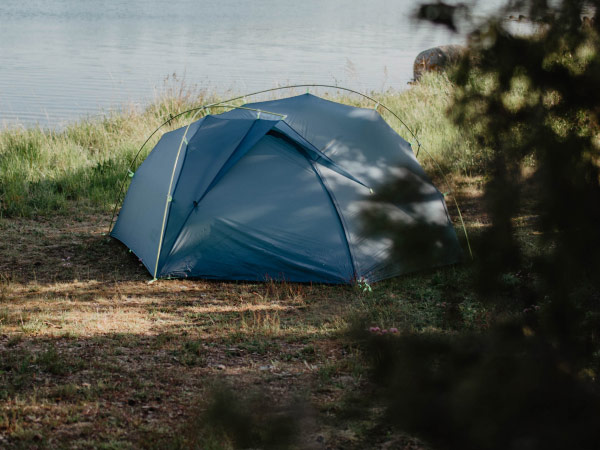
Camping whatever the weather: how to waterproof your tent
It’s true that sunny days are the best time to go camping for the most fun. For those who need protection from rain, however, it is advised that your tent is waterproofed regularly. Follow this go-to guide of six steps to make your trip a great experience.
Guide on how to waterproof your tent
How to waterproof a tent: when is the right time?Step 1: Test the extent of waterproofing still in the tent’s material
Step 2: First of all, thoroughly clean the tent
Step 3: Choose a suitable waterproofing product
Step 4: Seal the seams if necessary
Step 5: Apply a waterproofing method/product
Step 6: Leave to dry
-
Escape into the countryside and spend the night under the stars! There’s nothing quite like it. Consequently, it is worthwhile waterproofing your tent so that any wind or rain will not get in the way of these plans. Then you can rest assured that you are protected in your tent no matter how heavy the downpour.
Please note: You will not need to waterproof a new tent. This has generally already been done by the manufacturer. If you want to be certain that this is the case, then take a quick look at what has been written in the product description. However, every tent needs a refresh after a while. A tent will gradually lose its protective coating after being subjected to rain, wind and rubbing during transport.
Moreover, UV radiation will take its toll on the material and make it age more quickly. It makes sense to waterproof a tent after every two to three years of use. And it is really easy to do. Follow our step-by-step guide.
-
A couple of days before you set out on your next camping trip, check that the tent is still water-repellent. Pitch the tent in the open. The tarpaulin should be taught. Use a garden hose or watering can to spray the tent with water. If the water drips off the material in small droplets, then you can rest assured that there is still sufficient waterproofing in the material. By contrast, if the material appears to soak up the water, thereby creating a film of water and the inside of the tent becomes wet, it is high time to waterproof the tent once more.
-
Pitch the tent in the garden or somewhere out in the open. Check to make sure there is no noticeable damage. Everything as it should be? Great. Use a vacuum cleaner to remove as much dust as possible. Then take a damp cloth with a little washing-up liquid and clean the material.
-
As far as the material is concerned, tents are usually made of synthetic materials such as polyester, and very rarely from materials like cotton. Use a waterproofing product that is especially for the material in question. You generally have a choice between a waterproofing spray and a liquid.
You will need to spray from a distance, and the liquid waterproofing product normally needs to be diluted. A spray is normally easy to use and the contents will penetrate the pores of the material. If using a waterproofing liquid, you will need to ensure that it has been applied evenly, hence this will take a little longer.
-
The seams are the weak points of a tent. Did any of them have leaks when you carried out step 1? Then it would be wise to seal them before waterproofing the tent. Use a so-called ‘seam sealer’ for this. This is a special adhesive that you apply to the outside of faulty seams and leave to dry.
-
Is the tent clean and dry? Then it can now be waterproofed. First of all, ensure that you have fastened all zips, buttons, etc. Now spray the tent with the waterproofing spray approx. 20 to 30 centimetres away from the surface. Don’t rush this job, make sure that you have sprayed the tent all over evenly.
If your waterproofing product is a liquid, dilute it in line with the manufacturer’s instructions, and then apply using a sponge or cloth.
Irrespective of whether you have chosen a spray or liquid: waterproof your tent in the outdoors only. We would recommend that you wear a mask to prevent inhalation of any possible fumes.
-
Allow the waterproofing product to take effect and dry. You can generally gear the length of time it needs to dry from the manufacturer’s instructions on the product. Is it dry? Then repeat the test that was explained in Step 1. If some parts of the tent do not appear fully waterproofed, repeat the procedure several times. Always ensure that the tent is dry before repeating the process. No water has penetrated the tent? Then you can set off on your next outdoor adventure.
